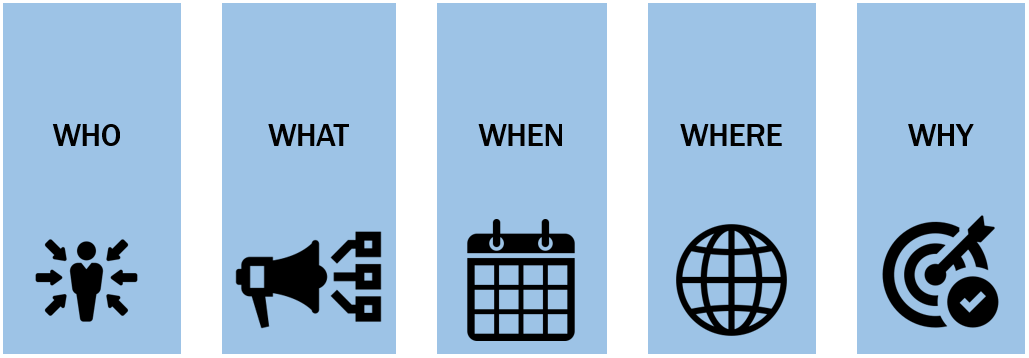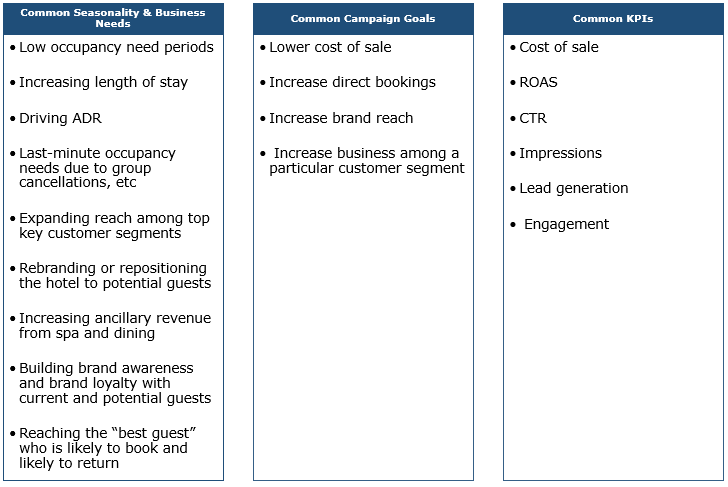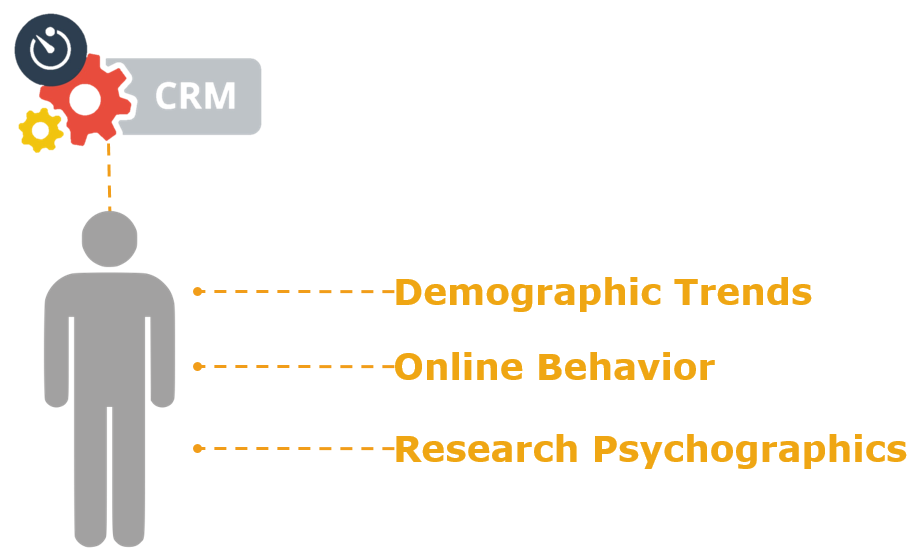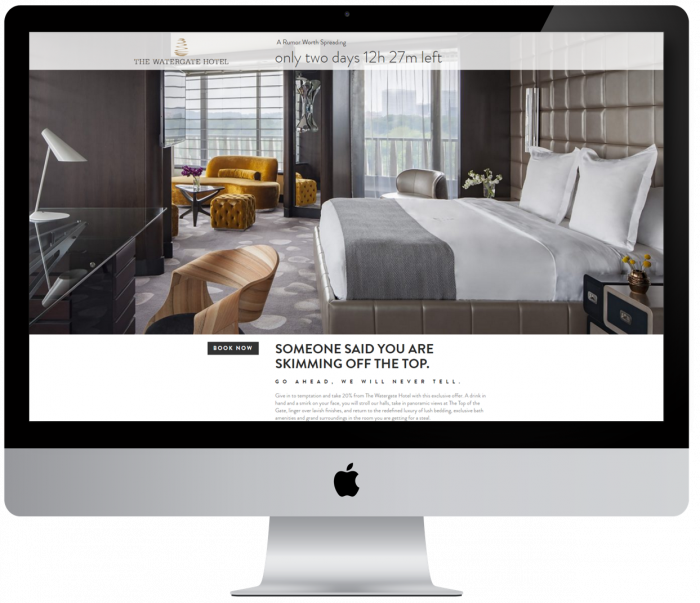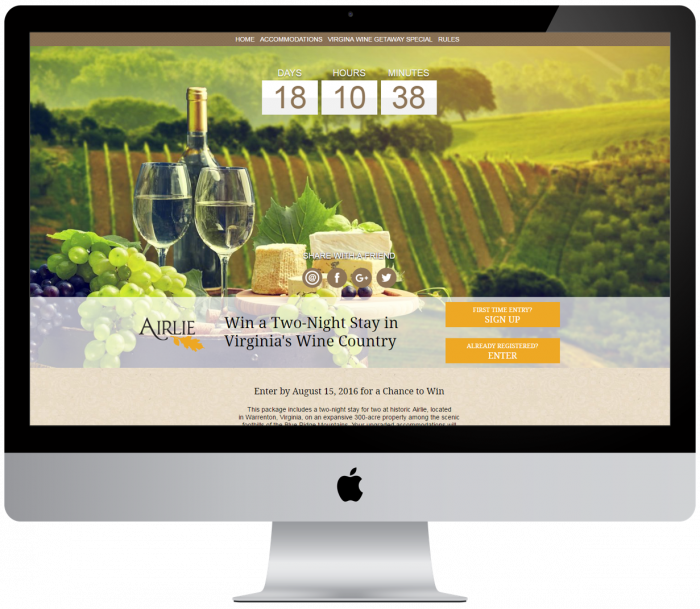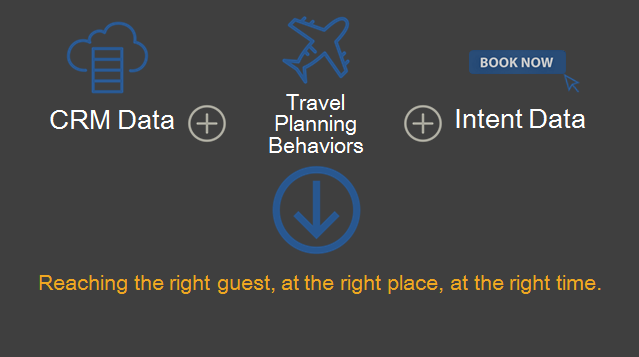
By Margaret Mastrogiacomo
Multichannel campaigns are one of the most effective ways to boost direct bookings, build one-to-one relationships with current and future guests, and ultimately, encourage repeat guests throughout the customer lifecycle.
According to Google, the travel planning journey is influenced by over 19 different touchpoints. While we have big-picture insight and data points that reveal the extensiveness of the travel planning journey, the path to a booking and the micro-moments along the way vary and key customer segments need to be reached through multichannel marketing campaign efforts.
Why are multichannel campaigns so powerful? By effectively reaching potential guests in intent-rich micro-moments across channels and devices with one cohesive brand message, multichannel campaigns are a great strategy to shift distribution from the OTAs, drive ADR, increase length of stay, capture a new segment, and achieve returns as high as 2,500%.
If you are ready to get started and increase direct bookings, you can begin building your multichannel campaign by answering the 5 W’s of any great narrative and any successful multichannel campaign: Who, What, When, Where, and Why.
Who: Use customer data, campaign insights, website analytics, and customer research to build a customer persona of your campaign’s target audience. It’s important to uncover both the emotional benefit and the functional benefit the target audience associates with your hotel brand and make sure this resonates in your marketing message.
What: Based on customer insights, craft the campaign message and brand narrative to reach the target segment with one cohesive message across channels and devices in key micro-moments.
When: Determine the best timing and campaign flight to effectively reach your target segment in the appropriate booking window.
Where: Map the path to purchase and determine the right marketing mix to reach the target segment throughout every touch point of the travel planning journey.
Why: Clearly determine the goals the campaign is trying to achieve in both performance metrics and positioning in the mind of the consumer.
Now that we’ve covered the basic infrastructure of multichannel campaigns, read on to learn the top 10 best practices to jumpstart direct bookings through multichannel campaigns.
1. Ensure you have an adequate, flexible budget to launch multichannel campaigns.
Every year hotel marketers face a number of business needs such as seasonality and occupancy needs, revenue management needs such as increasing length of stay and driving ADR, as well as general business objectives such as increasing group business, targeting a new customer segment, and lessening the dependency on the OTAs.
In order to successfully accomplish these goals and answer key business needs, it is important to reserve 15-25% of the overall digital marketing budget for multichannel campaigns. This portion of the budget should remain dynamic and flexible as the year progresses.
Be sure to properly allocate your budget to each campaign, mapping out seasonality, business needs, top target segments, and any other big-picture business goals that a multichannel campaign can achieve. When allocating budget across campaigns, we recommend a budget of at least $10,000 dollars with a two month minimum flight to ensure success.
2. Clearly establish business needs, campaign goals, and key performance indicators before you begin planning your multichannel campaign.
To build a successful multichannel campaign, you must establish an overarching business need your multichannel campaign is trying to solve, determine clear campaign goals you wish to accomplish, and set relevant key performance indicators to gauge success.
Really getting to the core of your hotel brand’s business needs when building a multichannel campaign will help you choose the most effective marketing initiatives and provide the blueprint for setting the right campaign goals and KPIs.
3. Utilize your CRM data to build target customer personas tapping into the demographics, psychographics, and online behaviors of your target segment.
Capitalizing on CRM data to fuel your digital marketing campaigns is one of the best ways to ensure you are targeting the right audience and reaching your “best guest.” CRM data provides insight into your “past guests” and can help strategically shape and develop the profile of future guests you wish to reach with your campaign.
To build the target customer persona, pay close attention to top demographic trends, trends in online behavior and travel planning, as well as research psychographics and more in-depth online behaviors once you’ve established the general profile of your target segment.
The process of building customer personas helps hotel marketers tap into the passion-points, interests, and online behaviors of the target segment to further ensure the campaign message will resonate with the target audience.
4. Map the path to purchase and key micro-moments to ensure you are reaching your target segment throughout the travel planning journey at the right place, the right time, and with the right initiative.
Understanding the target segment is just one piece of the multichannel campaign puzzle. Once you’ve established your target audience, you then need to map the path to purchase to ensure you are reaching potential guests with the right marketing initiatives throughout each touchpoint of the travel planning journey.
For instance, a mom planning travel for her family may start with a high-level Google search for “family beach destinations” before even deciding on a destination. To help aid her in deciding on a destination, she then may turn to social media and ask her peers for family beach destination recommendations.
On the other hand, a solo traveler planning business travel already knows their travel destination and the area within the city they will be meeting. Therefore, they may start their travel planning journey with a direct visit to a hotel website where they have loyalty points, or they may start with a destination specific search on Google that’s not only city specific but neighborhood specific such as “Hotel in Downtown Denver.”
This is just one quick example of how the travel planning journey can vary from segment to segment. In light of this, it is extremely important to go through the exercise of mapping the path to purchase for each segment. These travel planning touch points will help determine marketing initiatives such as mobile SEM, intent-driven Dynamic Rate Marketing across travel planning websites, TripAdvisor display, and more.
5. Ensure you have the right marketing mix to effectively reach your audience and ensure high campaign return on investment.
To set your campaign up for success, it’s best to start with your revenue goals and work backward to determine the appropriate marketing mix.
Based on your number of rooms, ADR, and occupancy during the need period you wish to address, determine your revenue goal for the campaign. Once you determine your goal revenue, work backward to determine the minimum budget you would need to spend to achieve the desired revenue with an ROI goal of at least 600% – 1,200% ROAS. The smaller the budget you have to work with, the larger share of funds you will need to invest in high ROAS campaign initiatives to achieve your revenue goal, while minimizing your investment in lower-yielding initiatives such as social media or creative content distribution.
A general rule of thumb for a successful multichannel campaign marketing mix is 30-40% investment in core revenue drivers such as SEM, GDN, Email, etc., 20-30% in display and social media advertising initiatives, 10% in organic campaign content, and 20-30% in campaign creative.
6. Plan a multichannel campaign that is cross-device ready.
A successful multichannel campaign doesn’t just reach key customer segments throughout the path to purchase, it reaches potential guests in key micro-moments seamlessly across devices.
According to Google, 90% of travel planners use multiple devices sequentially when booking a trip, making it extremely important for your multichannel campaign content to be cross-device ready.
For instance, the target segment of the mom planning travel doesn’t just start with a Google search for “top family beach destinations,” she may start that search on her mobile device while waiting with her children at the doctor’s office. So in this example, desktop SEM campaigns wouldn’t effectively reach our target mom. Our multichannel campaign would need to include Mobile SEM and GDN to effectively reach her at the first touchpoint of the travel planning journey.
Just this one small example reveals how extremely important it is to launch fully-responsive campaign creative and marketing initiatives that are tailored to the three screens to ensure success.
7. Ensure your campaign utilizes a cohesive message across channels and devices that resonates with your customer segments and their passion-points.
If you reach the right customer with the wrong marketing message that doesn’t resonate, you are not only wasting potential guests’ time, you are wasting your hard-earned marketing dollars.
For a multichannel campaign to inspire a booking, it must tap into both the functional and emotional benefits the target segment associates with your property or brand, or the functional and emotional benefit they associate with the “ideal hotel” for their upcoming stay.
As Aristotle once said, “The whole is greater than the sum of its parts,” and this really rings true in building effective multichannel campaigns. Once you determine the right campaign messaging, it’s extremely important to embrace Aristotle’s philosophy and ensure that your campaign message is cohesive across channels and devices to amplify the power of your marketing message, build traction, and effectively drive bookings.
8. Utilize powerful and engaging technology that assists in lead generation, relationship building, and driving direct bookings.
Aside from the right message and marketing mix, planning a powerful multichannel campaign requires rich, engaging technology to convert potential guests once they reach the campaign landing page or application. A highly successful multichannel campaign must have a destination mini-site or application that includes rich images, share functionalities, and dynamic content personalization that will interest and engage users enough to encourage repeat visits, increase time spent, and ultimately drive bookings.
An Interactive Limited-Time Offer Application is one example of such digital technology applications capable of maximizing revenue. Serving as the central hub for the campaign, this highly-visual, fully-responsive application features a prominently displayed countdown clock, booking functionality with embedded promo code, large, rich images of the hotel, social and viral sharing features, an Email sign up widget, and key information about the sale, benefits, and rules.
Example Limited-Time Offer Application:
Another great example of an engaging application is an Interactive Promotion Application with a robust automated backend and algorithm offering daily and grand prizes. This application also features a prominently-displayed countdown clock, large, rich imagery of the hotel, social and viral sharing features, Email sign up widget, and engaging add-ons such as photo sharing.
Example Interactive Promotion Application:
9. Utilize your CRM data to launch data-driven marketing initiatives that utilize the power of intent to reach your best guest on a more cost-effective budget.
To launch “smarter” multichannel campaigns, fuel your campaign with the balanced utilization of CRM data and intent data to increase incremental bookings and ensure you are reaching your “best guest” at the right place, at the right time, and on the right device during the travel planning process to your hotel’s destination. Not only does this allow you to reach the right potential guest who is most-likely to book your hotel on an extremely cost-efficient budget, it will also provide rich data and insight to replenish your CRM data and utilize for future campaigns.
10. Ensure you have the right analytics to effectively track and optimize conversions.
Without proper tracking, the perfect strategy can fall flat as you try to navigate campaign success. It’s important to use state-of-the-art tracking applications such as Adobe Analytics, Adobe Media Optimizer, and DoubleClick’s DART for Advertisers (DFA), which are the industry’s standard solutions. With the right tracking capabilities, it will be easy to optimize campaign performance, measure KPIs, and adjust the marketing mix as needed to achieve desired goals and ROI.
It’s also important to remember that a successful campaign requires consistent, ongoing optimization based on the KPIs of your campaign. Campaign metrics such as share of voice, impression pacing, and engagement are important criteria to monitor and adjust in real-time to ensure success.
Lastly, A/B testing of campaign messaging and/or one isolated campaign variable such as colors and images is another great way to optimize throughout the campaign and ensure optimal results.


